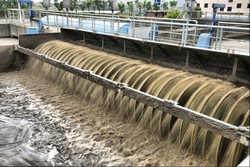Green energy from treated sewage sludge
Sewage sludge (also termed wastewater sludge) is the main by-product of the treatment of wastewater. However, disposal of sewage sludge can be up to 60 % of the total operating cost of a wastewater treatment plant (WWTP) as it consumes enormous amounts of energy. The MFC4SLUDGE(opens in new window) ("MFC4Sludge": Microbial fuel cell technologies for combined wastewater sludge treatment and energy production) project worked with European SMEs to develop a suitable commercial alternative to existing wastewater sludge treatments. The consortium took an innovative approach to ensure environmental impacts were minimised and that no additional energy demands will be placed upon current WWTPs. Project partners' sustainable solution comes in the form of a microbial fuel cell (MFC) coupled to hydrolytic-acidogenic anaerobic digestion (HA-AD). Researchers used these complementary technologies to develop an energy system capable of reducing organic compounds in wastewater by more than 90 %, while producing energy at the same time. Development of MFCs focused on improving the system's efficiency and cost effectiveness. This was achieved by designing control strategies for achieving optimal performance and by developing new cell configuration and cathodes. A lab-scale HA-AD digester was also designed and built, and initial tests were conducted to determine its operational range. The effluent from partial anaerobic digestion of WWTP sludge was studied with regard to volatile fatty acids production. Results indicated that the effluent from partial anaerobic digestion was suitable for bioelectricity production in MFCs. Mathematical models were also developed for the HA-AD, MFC and coupled processes. MFC4SLUDGE will reduce the environmental impact of sewage sludge by reducing its volume and providing a source of energy, thus valorising such waste. However, it is not limited to domestic wastewater as it can also be applied to sludges coming from industrial WWTPs containing high nitrogen or sulphur content, extremely low pH values or organic compounds. The project's results will also improve the competitiveness of participating SMEs by providing them with valuable know-how and increased employment opportunities. In addition, they will encourage the use of sewage sludge in agriculture by enabling local authorities operating WWTPs to comply with the Sewage Sludge Directive 86/278/EEC.







